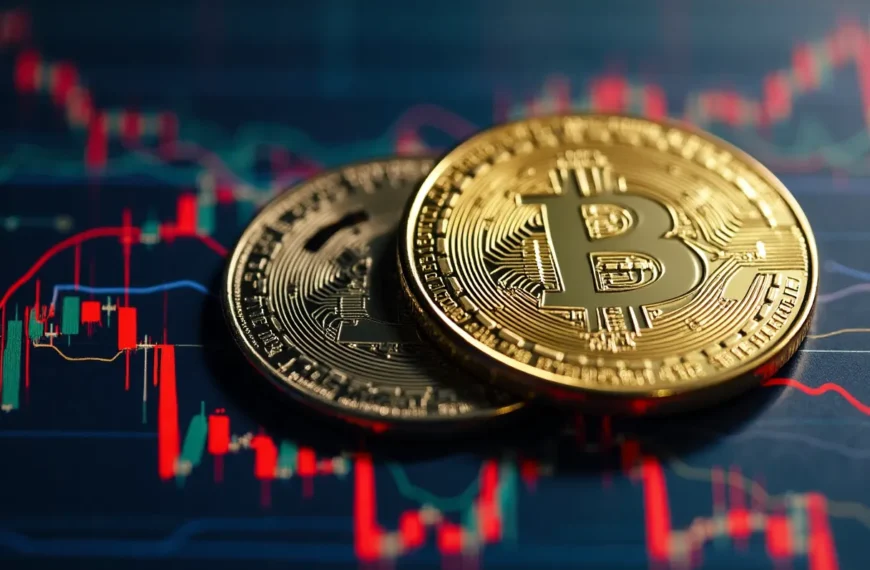Understanding the Current Economic Landscape
In recent years, the financial world has been witnessing a significant transformation, primarily driven by the rise of cryptocurrencies, particularly Bitcoin. As the U.S. dollar faces uncertainty and potential decline, many investors are turning their attention to alternative assets like Bitcoin and gold. This shift is not just a reaction to market volatility; it is also indicative of a broader confidence crisis in traditional fiat currencies.
The U.S. Dollar: A Symbol of Stability?
The U.S. dollar has long been viewed as a safe haven for investors. Its status as the world’s primary reserve currency has provided a sense of stability in global markets. However, as economic indicators point to possible inflation and fiscal instability, many are questioning whether the dollar can maintain its position.
Key factors contributing to this crisis include:
- Rising inflation rates.
- Increased national debt.
- Uncertain fiscal policies and government spending.
- Global geopolitical tensions affecting trade.
As these factors converge, the dollar’s purchasing power could diminish, prompting traders to seek refuge in alternative assets.
Bitcoin’s Emergence as a Viable Alternative
In the face of a potential dollar collapse, Bitcoin is emerging as a serious contender for a value store. Its decentralized nature, capped supply, and growing acceptance among investors make it an attractive option. With a market capitalization that has now reached significant levels, Bitcoin is not just a speculative asset but is increasingly seen as a digital gold.
Advantages of Bitcoin include:
- Scarcity: Bitcoin has a fixed supply of 21 million coins, making it immune to inflationary pressures.
- Decentralization: Unlike fiat currencies, Bitcoin is not controlled by any single entity, providing a hedge against government mismanagement.
- Liquidity: As a globally traded asset, Bitcoin offers high liquidity, allowing investors to buy and sell quickly.
- Growing Adoption: More businesses and institutional investors are beginning to embrace Bitcoin, further legitimizing its role in the financial ecosystem.
Bitcoin vs. Gold: The $22 Trillion Challenge
Traditionally, gold has been the go-to asset during times of economic uncertainty. With a market size of approximately $22 trillion, gold has long been regarded as a safe haven. However, as Bitcoin continues to gain traction, it poses a formidable challenge to gold’s long-held dominance.
The comparisons between Bitcoin and gold highlight several key points:
- Store of Value: Both assets are seen as stores of value, but Bitcoin’s unique properties may offer advantages over gold.
- Portability: Bitcoin can be transferred easily across borders without the complications associated with physical gold.
- Transparency: Bitcoin transactions are recorded on the blockchain, providing a transparent and immutable ledger.
As confidence in the dollar wanes, Bitcoin’s potential to capture market share from gold increases. Investors are beginning to allocate more of their portfolios to Bitcoin as they seek a hedge against inflation and economic instability.
The Role of Institutional Investors
Institutional investors are playing a pivotal role in the growing acceptance of Bitcoin. Major financial institutions and corporations are now adding Bitcoin to their balance sheets, which not only legitimizes the asset but also increases its value in the eyes of retail investors.
Recent trends among institutional investors include:
- Increased allocation: Many are allocating a small percentage of their portfolios to Bitcoin, viewing it as a strategic asset.
- Investment products: The introduction of Bitcoin ETFs and other investment vehicles has made it easier for traditional investors to gain exposure to Bitcoin.
- Hedging strategies: Institutions are using Bitcoin as part of their hedging strategies against currency devaluation and market volatility.
As institutional demand for Bitcoin grows, its legitimacy and price could rise, further challenging gold’s status.
The Future of Bitcoin in a Changing Economy
As we look ahead, the economic landscape is likely to evolve dramatically. The combination of economic uncertainty, inflationary pressures, and the increasing acceptance of digital currencies will shape the future of investing.
Potential scenarios for Bitcoin’s future include:
- Continued price appreciation: If the dollar continues to weaken, Bitcoin could see significant price increases as demand surges.
- Regulatory developments: Governments may impose regulations that could impact Bitcoin’s usability and price dynamics.
- Mainstream acceptance: As more businesses start accepting Bitcoin as payment, its utility as a currency could increase, further driving demand.
The transition from traditional assets to digital currencies is already underway, and Bitcoin stands at the forefront of this revolution. As traders and investors navigate the complexities of the current economic climate, Bitcoin’s role as a potential store of value will likely continue to grow.
Conclusion
The evolving economic landscape presents both challenges and opportunities for investors. As the U.S. dollar faces potential collapse, Bitcoin is emerging as a serious alternative to traditional assets like gold. With its unique properties and growing institutional adoption, Bitcoin could redefine the way we think about value storage in the modern era.
The ongoing confidence crisis in fiat currencies, coupled with Bitcoin’s resilience and appeal, suggests that we may be entering a new age of digital asset investment. As we move forward, the $22 trillion challenge posed by Bitcoin to gold will be one to watch closely, as it could reshape the future of finance.






